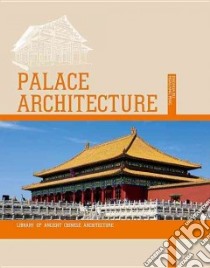Palace Architecture - 9781627740128
Un libro in lingua di Jinghua Ru Hualiang Peng edito da Cn Times Books, 2015
- € 25.30
- Il prezzo è variabile in funzione del cambio della valuta d’origine
Palace Architecture explores the transformation of the palace in ancient China, from the primitive state of early palaces to the ornate and luxurious imperial palaces of the great dynasties. Chinese palace architecture was closely related to the Chinese ideology of land, agriculture, and the worship of heaven and ancestors. Palace buildings were erected around a central courtyard and were closed to the outside world. The Forbidden City, or the Imperial Palace in Beijing, is the most magnificent among the palaces of the Qing Court. The sole imperial palace preserved intact in China today, it is often viewed as the perfect synthesis of all architectural measures of previous dynasties. In ancient China, the palatial city was a restricted zone, closely guarded to ensure the emperor’s absolute safety. The walled enclosure of the Forbidden City was built wide and tall, and the moat surrounding it was wide and deep, forming an extremely fortified position. The huge complexes of the Forbidden City not only embodied imperial power, but they were demonstrations of imperial dignity.
In Palace Architecture, Ru Jinghua and Peng Hualiang detail the Imperial Palace in Beijing, in addition to the Imperial Palace in Shenyang, a magnificent complex built during the Qing dynasty. Palace Architecture includes 159 color photographs, 28 illustrations and figures, 2 charts, and 2 maps, providing the reader with a detailed visual account of the two palaces’ beauty and ornate design. It also explores the general layout of the Imperial Palace and the design of individual palatial buildings, including their architectural planning, construction, and decoration.
In Palace Architecture, Ru Jinghua and Peng Hualiang detail the Imperial Palace in Beijing, in addition to the Imperial Palace in Shenyang, a magnificent complex built during the Qing dynasty. Palace Architecture includes 159 color photographs, 28 illustrations and figures, 2 charts, and 2 maps, providing the reader with a detailed visual account of the two palaces’ beauty and ornate design. It also explores the general layout of the Imperial Palace and the design of individual palatial buildings, including their architectural planning, construction, and decoration.
Informazioni bibliografiche
- Titolo del Libro in lingua: Palace Architecture
- Sottotitolo: Imperial Palaces of the Last Dynasty
- Lingua: English
- Autori : Jinghua Ru Hualiang Peng
- Editore: Cn Times Books
- Collana: Cn Times Books (Paperback)
- Data di Pubblicazione: 03 Marzo '15
- Genere: ARCHITECTURE
- Pagine: 192
- Dimensioni mm: 215 x 152 x 0
- EAN-13: 9781627740128


